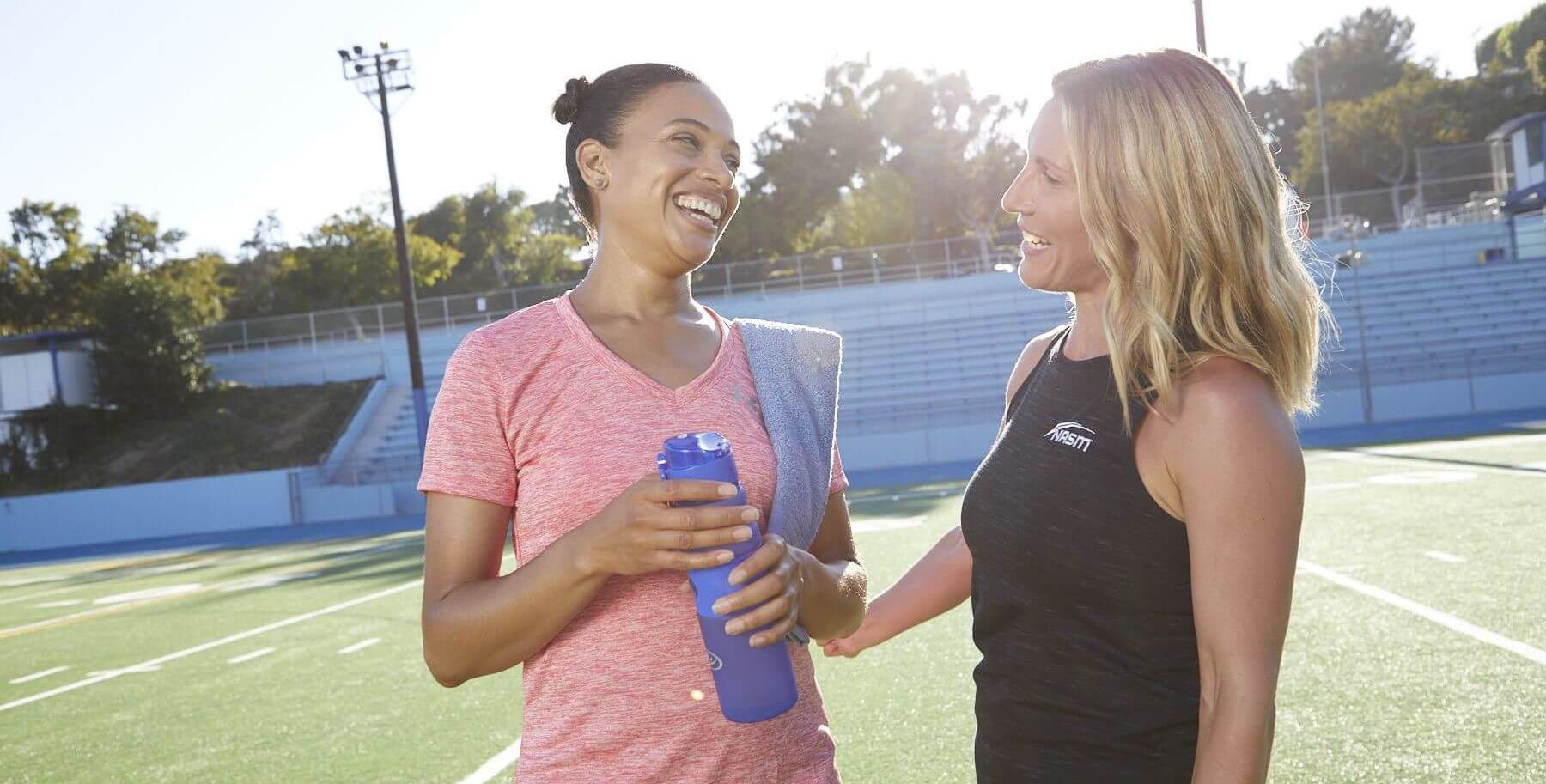Have you ever wondered why your upper back is "stiff" or wish that someone would grab your shoulders and give you a quick shoulder massage? Well, if this is you, you are not alone.
Our lives are often overtaken by hectic work schedules, technology, kids’ schedules and needs, lack of sleep, and stress. All of these factors can add up and manifest in altered upper body posture, forward head posture, pain, thoracic outlet syndrome, and discomfort.
Below, we will explore 12 corrective exercises to help strengthen the upper back, which will help you perform, feel, and look better throughout your day.
Let’s get started!
12 Upper Back Corrective Exercises
1. Ball Combo 1:
Begin laying face-down on a ball with your feet against a wall, your legs straight, abs in, and glutes activated.
Next, bring your arms into a "V" position, hold for 2 seconds, move to a lateral raise position, hold for 2 seconds and then finish in a cobra position and hold for 2 seconds.
Repeat this 10-20 times and perform for 1-3 sets.
2. Ball Combo 2:
Begin laying face-down on a ball with your feet against a wall, legs straight, abs in, and glutes activated.
Next, perform a row, hold for 2 seconds, move to an externally rotated position, hold for 2 seconds, and then finish with your arms above your head and hold for 2 seconds.
Repeat this 10-20 times and perform for 1-3 sets.
3. Cable or Resistance Band Row
Begin facing a cable machine with your feet pointed straight ahead and shoulder-width apart.
Next, bring your elbows back, focusing on squeezing your shoulder blades together.
Be sure not to shrug or jut your head forward. Perform 10-20 reps for 1-3 sets.
4. Floor or Ball Cobras
You can perform these on the floor or a ball. Begin in a face-down position with your legs straight, abs in, and glutes activated.
Be sure not to arch your low back and keep your face and chest close to the floor while performing the exercise.
Next, with your palms facing the ground and arms out to your side, bring your arms close to your sides with thumbs facing the ceiling.
Be sure to focus on squeezing your shoulder blades and depressing your shoulders down and back (think about putting your shoulder blades in your back pocket).
Hold this position for 2 seconds and then slowly return to the starting position.
Repeat 10-20 times and perform for 1-3 sets.
Check out this exercise demonstration of the floor cobra.
5. Cable or Tubing Rear Deltoids
Being facing a cable machine with your feet pointed straight ahead and shoulder-width apart.
Next, bring your arms straight back, focusing on squeezing your shoulder blades together.
This will look like a backward chest fly exercise.
Be sure not to shrug or move your head forward.
Perform 10-20 reps for 1-3 sets.
6. Suspended Inverted Row
Begin by holding on to the handles and lowering your body toward the floor (you are in a supine position).
Keep your entire body in a straight line with abs in and legs straight.
In this position, bring your body up by bending your elbows and performing a row.
Squeeze your shoulder blades together and then slowly lower your body back to the starting position.
You can regress this exercise by standing in more of an upright position and then progress it by aligning your body parallel to the floor.
Perform 10-20 reps for 1-3 sets.
7. Standing Scaption
Begin with your toes pointed forward, legs shoulder-width apart, abs in and head in neutral alignment.
Next, bring your arms up into a "Y" position, hold for 2 seconds, and then slowly lower to the starting position.
Repeat 10-20 times and perform for 1-3 sets.
8. Diagonal Band Pull Apart
Begin with your toes pointed forward, legs shoulder-width apart, abs in and head in neutral alignment.
Grab the ends of the resistance band with both hands and hold your arms straight out in front of your body around shoulder height.
Next, pull your right arm down at an angle towards your waist and your left arm upwards at an angle.
Slowly bring your arms back to the starting position and then switch sides so that your left arm is going downwards, and your right arm is going up.
This should make an “X” type pattern.
Rotate back and forth and repeat for 10-20 reps, 1-3 sets.
9. Face Pulls
Begin with your toes pointed forward, legs shoulder-width apart in a staggered stance, abs in and head in neutral alignment.
Using a cable with a rope attachment or resistance band, pull your hands toward your face, finishing with them beside your ears.
Slowly return to the starting position and repeat 10-20 times. Perform 1-3 sets.
See a form breakdown of the face pull here.
10. One Arm Dumbbell Row:
Begin with your left leg on the bench with your abs in, neck in a neutral position, and back flat.
Next, reach down and pick up the dumbbell in your right hand with a neutral grip (palm facing you).
Pull the dumbbell up toward the side of your body, focusing on squeezing your shoulder blade.
Slowly lower the weight and repeat for 10-20 reps, for 1-3 sets per side.
11. Pushup with Rotation:
Begin in a pushup position with abs in and glutes activated.
Next, lower your body toward the floor to perform the pushup (making sure your neck stays in alignment with your torso).
Return to the top of your pushup and then rotate your torso sideways and reach your right arm toward the ceiling (should look like a “T”).
Your eyes should follow your hand. Hold for 1-2 seconds and then slowly return to your pushup position and repeat on the other side.
Perform 10-20 reps for 1-3 sets.
12. Side Plank with Resisted Row:
Please note that this is a more advanced exercise, so you must be able to perform a plank without compensation first to be successful at performing this exercise.
Begin by lying on your right side, with legs straight, abs in, and glutes activated.
Align your right elbow directly underneath your shoulder with your hand in a neutral position.
Lift your torso up while maintaining alignment and then grab tubing or a cable and perform a row (bring left elbow toward your torso and focus on contracting the muscles around your shoulder blade).
Repeat the row while staying in the plank position for 10-20 reps.
Repeat on the other side. Perform 1-3 sets per side.
CONCLUSION: CORRECTIVE EXERCISES AND UPPER CROSSED SYNDROME
Utilizing these 12 corrective exercises, you can prevent upper body pain and stiffness, in addition to syndromes like “upper-crossed syndrome”.
The upper-crossed syndrome is characterized by a rounded upper back and shoulders and a forward head position. This rounded shoulder posture tends to shorten the muscles on the front side of the upper body and subsequently lengthen muscles in the mid and upper back—putting them under greater tension—which can lead to fatigue, pain, soreness, and a sensation of tightness.
For individuals experiencing pain, discomfort, and soreness due to upper-crossed syndrome, the aforementioned exercises are a great way to alleviate the symptoms. When the shoulders are rounded and elevated, we want to activate the muscles of the mid and upper back and posterior shoulder to help improve and restore ideal alignment.
If you’re a Corrective Exercise Specialist, take these exercises and apply them with your clients today! And if you are looking for a great (and free overview) on the importance of stretching as it relates to corrective exercise, we have just the stretching mini course for you!

















